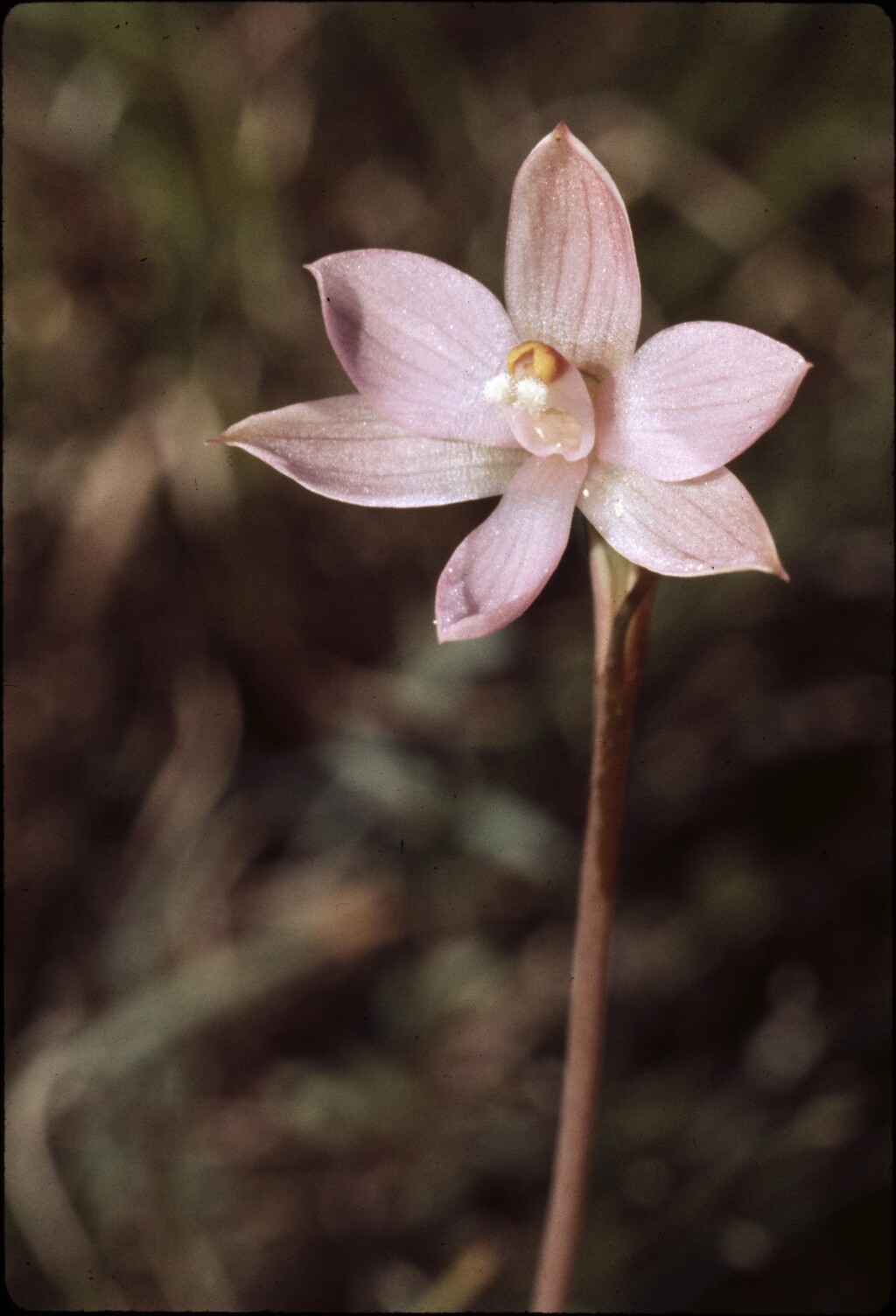Thelymitra pauciflora
R.Br.Flowering stem erect, straight, 15–50 cm tall, 0.5–1.5 mm diam., green to purplish. Leaf linear, attenuate, (8–)15–30 cm long, 3–6 mm wide, fleshy, canaliculate, weakly veined, sheathing at base, green with a purplish base. Inflorescence 1–3(–5)-flowered, open. Sterile bracts 1 or 2, rarely 3. Perianth segments lanceolate to ovate, 6–10 mm long, pale blue, less often pink or white. Column slender, 4–5 mm long, weakly pigmented at base, pale blue or pale pink; mid-lobe expanded into hood over the anther, tubular, curved, directed horizontally forward, yellow with a dark basal collar, apex entire or emarginate; lateral lobes converging 0.5–1 mm long, digitiform, porrect at base then bent upwards sharply near the middle at c. 90 deg., each with a sub-terminal mop-like tuft of white hairs terminating in front of orifice. Anther inserted above centre of column, shortly beaked. Flowers Sep.–Nov.
LoM, Wim, GleP, VVP, VRiv, GipP, OtP, WaP, Gold, CVU, GGr, DunT, NIS, EGL, EGU, WPro, HSF, HNF, OtR, Strz, MonT, VAlp. Also Qld, NSW, ACT, Tas. Common and widespread in grassland, heathland, coastal scrubs, woodland and open forests from near sea-level to montane areas.
Widespread in south-eastern Australia and also in New Zealand.
Flowers are self-pollinating and only open on warm, humid days.
Weber, J.Z.; Entwisle, T.J. (1994). Thelymitra. In: Walsh, N.G.; Entwisle, T.J., Flora of Victoria Vol. 2, Ferns and Allied Plants, Conifers and Monocotyledons, pp. 840–854. Inkata Press, Melbourne.
 Spinning
Spinning



